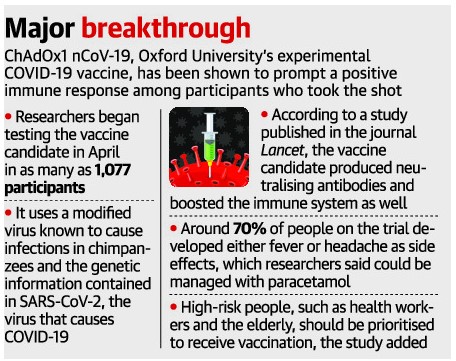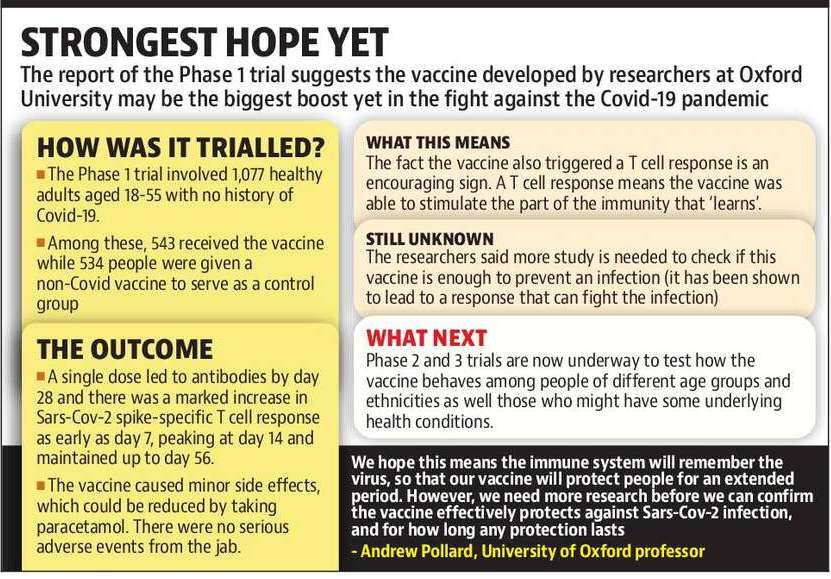Focus: GS-III Science and Technology
Why in news?
Scientists at Oxford University say their experimental coronavirus vaccine has been shown in an early trial to prompt a protective immune response in hundreds of people who got the shot.
What is the Oxford Vaccine?
- The AZD1222 coronavirus vaccine candidate, formerly known as ChAdOx1 nCoV-19, is made from a virus (ChAdOx1), which is a weakened version of a common cold virus (adenovirus) that causes infections in chimpanzees, that has been genetically changed so that it is impossible for it to grow in humans.
- Genetic material has been added to the ChAdOx1 construct, which is used to make proteins from the SARS-CoV-2 coronavirus called Spike glycoprotein (S).
- This protein is usually found on the surface of SARS-CoV-2 and plays an essential role in the infection pathway of the SARS-CoV-2 virus.
- This vaccine is intended to induce both ways of finding and attacking pathogens: antibody and T cell responses – so it can attack the virus when it’s circulating in the body, as well as attacking infected cells.
Results of the Testing

- 1,077 healthy adults who were given the AZD1222 vaccine did not develop any serious side effects, and their bodies developed an immune response that could protect people for a significant amount of time.
- There’s increasing evidence that having a T-cell response as well as antibodies could be very important in controlling COVID-19.
- Phase 2 is underway in the UK only and phase 3 trials to confirm whether it effectively protects against Sars-CoV-2 infection are happening in the UK, Brazil and South Africa.

Click Here to read more about Human Trial Phases
-Source: The Hindu, Times of India



